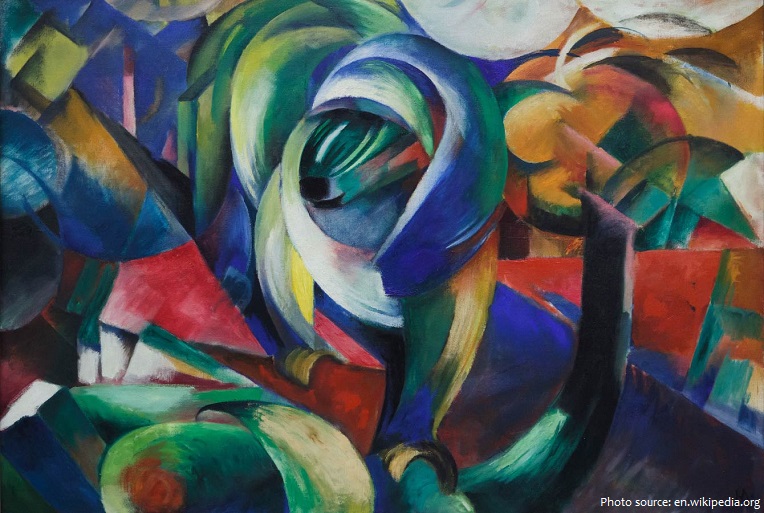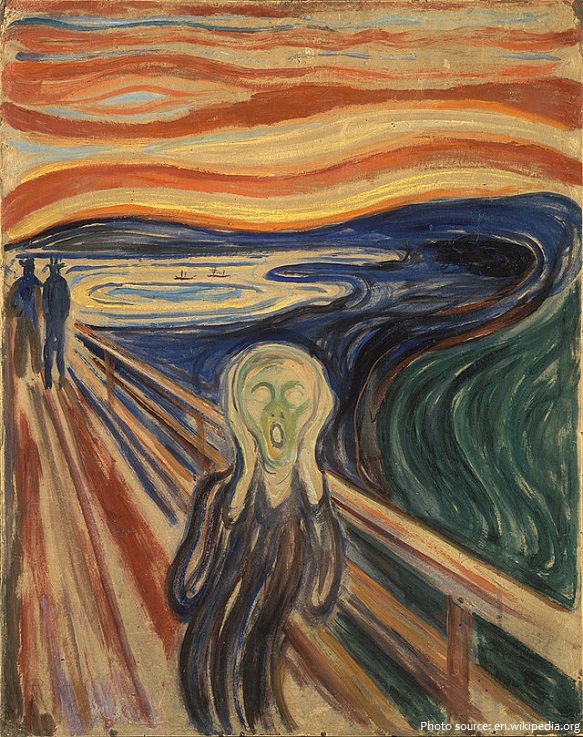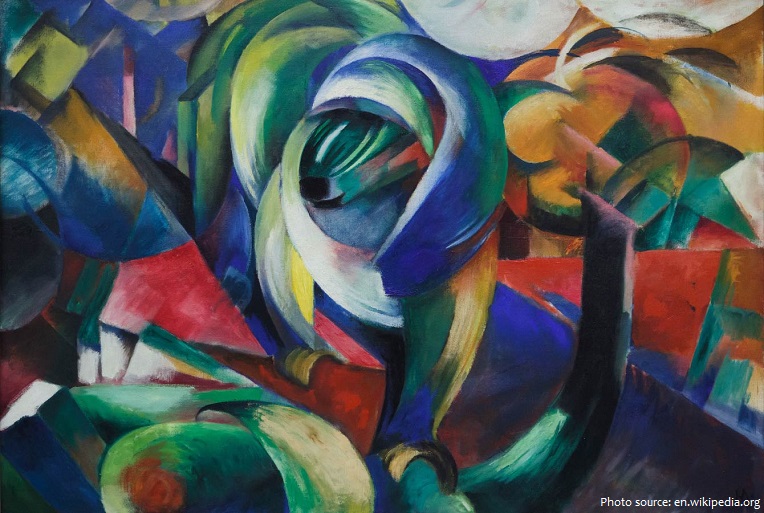
Expressionism, artistic style in which the artist seeks to depict not objective reality but rather the subjective emotions and responses that objects and events arouse within a person.
Its typical trait is to present the world solely from a subjective perspective, distorting it radically for emotional effect in order to evoke moods or ideas. Expressionist artists have sought to express the meaning of emotional experience rather than physical reality.
Expressionist artists often employed swirling, swaying, and exaggeratedly executed brushstrokes in the depiction of their subjects. These techniques were meant to convey the turgid emotional state of the artist reacting to the anxieties of the modern world.
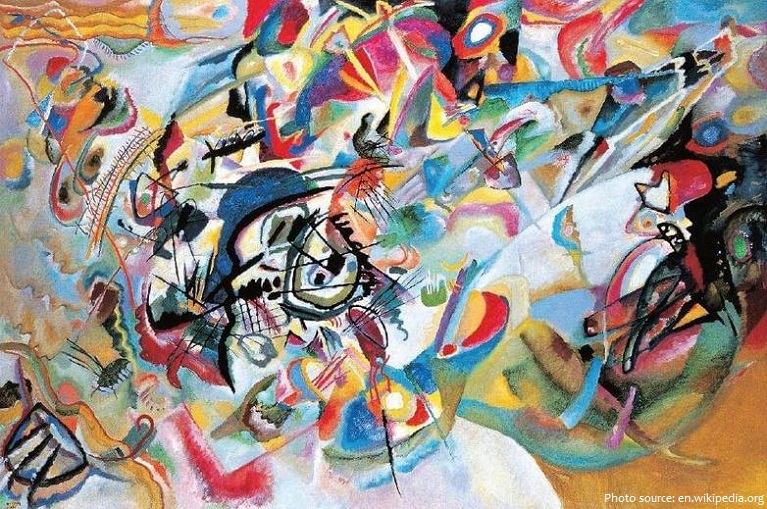
Some of the defining elements of Expressionism art are:
• the permanent need of absolute, aspiration towards the ideal
• the annulment of the old dogmas of realism that do nothing but capture the factual, logical realities of life, in favor of the search for a spiritual reality
• the search for the original, the uncreated
• the return to the primordial, to the origins, to the mythical universe
• the existential tragedy caught and overcome once the being manages to reach the absolute, by spiritualizing the feelings, these becoming cosmic, metaphysical
• favorite themes and motives: metaphysical sadness and anxiety, despair, absence, nothingness, death, ego disintegration, hallucinatory
• naturecultivated aesthetic categories: fantastic, macabre, grotesque, mythical, magical
poetic images are vivid, strange, contrasting like expressionist paintings
• language is sometimes violent, shocking
Expressionism developed as an avant-garde style before the First World War.
Artwork such as Edvard Munch’s The Scream, from 1893, is often regarded as an inspiration for the style and subject matter of the Expressionist movement. The Norwegian artist’s famous work represents a transition from post-Impressionism to Expressionism, as it hosts a greater sense of abstraction, more generous brushwork and complementary colors than the movements that preceded it.
Vincent van Gogh’s Starry Night, from 1889, is another example of Expressionism’s use of bold color and rough brushwork to depict a scene from nature in a highly subjective manner. The Dutch painter uses the impasto technique to create a swirling sky and lush looking greenery that seem to engulf a tiny town. While many consider Starry Night to belong to the post-Impressionist period, its introspective quality, treatment of paint and color have a clear influence on the Expressionist artwork that came
afterward. Impasto also became a popular Expressionist painting technique.
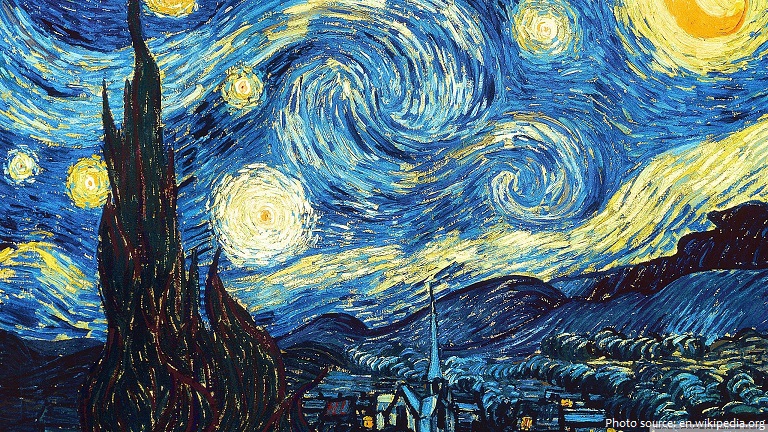
Expressionism emerged simultaneously in various cities across Germany as a response to a widespread anxiety about humanity’s increasingly discordant relationship with the world and accompanying lost feelings of authenticity and spirituality. In part a reaction against Impressionism and academic art, Expressionism was inspired most heavily by the Symbolist currents in late-19th-century art. Vincent van Gogh, Edvard Munch, and James Ensor proved particularly influential to the Expressionists, encouraging the distortion of form and the deployment of strong colors to convey a variety of anxieties and yearnings.
The arrival of Expressionism announced new standards in the creation and judgment of art. Art was now meant to come forth from within the artist, rather than from a depiction of the external visual world, and the standard for assessing the quality of a work of art became the character of the artist’s feelings rather than an analysis of the composition.
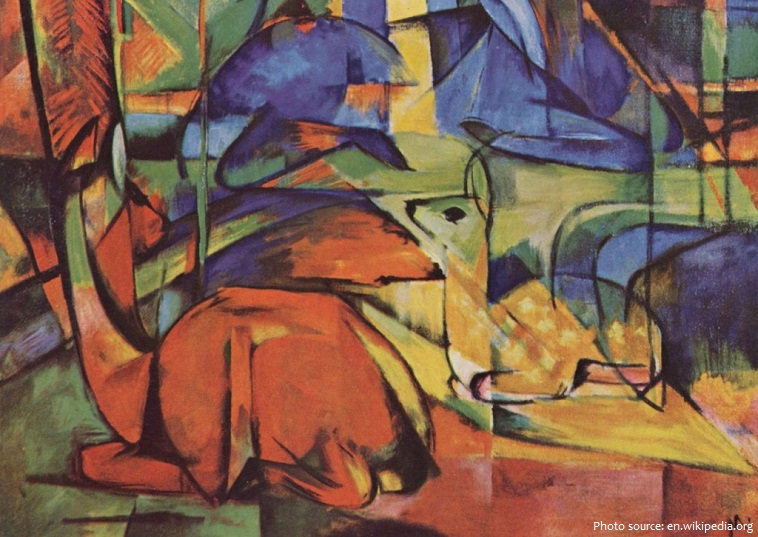
In 1905, a group of four German artists, led by Ernst Ludwig Kirchner, formed Die Brücke (the Bridge) in the city of Dresden. This was arguably the founding organization for the German Expressionist movement, though they did not use the word itself. A few years later, in 1911, a like-minded group of young artists formed Der Blaue Reiter (The Blue Rider) in Munich. The name came from Wassily Kandinsky’s Der Blaue Reiter painting of 1903. Among their members were Kandinsky, Franz Marc, Paul Klee, and August Macke. However, the term Expressionism did not firmly establish itself until 1913. Though mainly a German artistic movement initially and most predominant in painting, poetry and the theatre between 1910 and 1930, most precursors of the movement were not German. Furthermore, there have been expressionist writers of prose fiction, as well as non-German-speaking expressionist writers, and, while the movement had declined in Germany with the rise of Adolf Hitler in the 1930s, there were subsequent expressionist works.

Through their confrontation with the urban world of the early-20th century, Expressionist artists developed a powerful mode of social criticism in their serpentine figural renderings and bold colors. Their representations of the modern city included alienated individuals – a psychological by-product of recent urbanization – as well as prostitutes, who were used to comment on capitalism’s role in the emotional distancing of individuals within cities.
The origin of the term “Expressionism” is often debated by art historians, though it was likely coined between 1901 and 1910.
The most famous Expressionist, Edvard Munch, was a Norwegian printmaker. Throughout his life, he suffered many nervous breakdowns. But perhaps it was his mental health that spurred him to be a leader in this movement.
In architecture, two specific buildings are identified as Expressionist: Bruno Taut’s Glass Pavilion of the Cologne Werkbund Exhibition (1914), and Erich Mendelsohn’s Einstein Tower in Potsdam, Germany completed in 1921.
